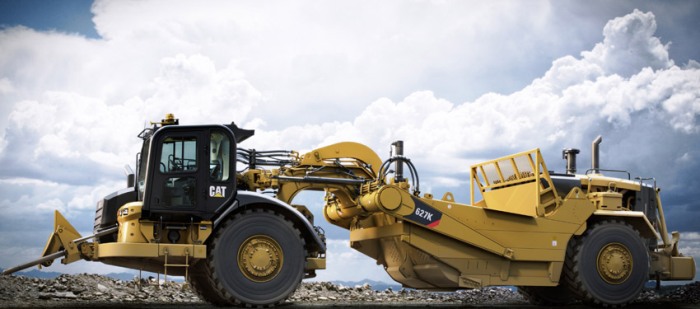Wheel tractor-scrapers have huge utility in mine and aggregate businesses due to their capability to move high volumes of material over long distances with no the need for customary loading tools.
All scrapers are made for durability and long life, but they have lots of moving parts and must be maintained properly to guarantee consistent operation and high output. Here are 3 tips on how to maintain a wheel tractor-scraper.
Choosing the optimum wheel tractor-scraper
Having the right machine for the application is critical to keep maintenance costs down. Wheel tractor-scrapers are available in numerous different configurations; mine operators have the chance to increase production and reduce expenses by choosing the right machine. Loading configurations consist of open bowl and elevating. The best scraper for the job depends on the construction site conditions.
Five hundred hours characterizes the point of numerous filter changes. Engine oil and filter are to be changed at that interval, as is the fuel system filter, the hydraulic oil filter, and the transmission oil filter.
When grades are mild and underfoot conditions are excellent, a single-engine scraper can function at utmost speed and lowest expense. With the help of a push tractor, the single-engine scraper loads faster and hauls to the fill, while hauling minimum iron and using minimum fuel. The push tractor gives the primary loading power, but loading expenses still remains lower than systems used to load trucks.
If the site presents grades steeper than 5 percent on the haul and 12 percent when returning empty, tandem-powered scrapers are the answer. The higher horsepower-to-weight ratio lets twin-engine scrapers to scale up grades as much as 35 percent. Also, four-wheel drive powers such scrapers through underfoot conditions that stop two-wheel-drive machines. The capability to function in poor underfoot conditions can guarantee more workdays annually from the twin-engine scrapers. Tandem-powered scrapers can reduce cycle times, because they have better grade ability and higher usable rim pull. Acceleration is quicker out of the cut and away from the fill. Though higher owning and operating costs moderately counter the improved production, tandem-powered scrapers may still generate the lowest cost per yard.
Most wheel tractor-scraper models have day by day service recommendations that stipulate components to be greased.
Examining vigilantly
The operation and maintenance handbook for every specific model of wheel tractor-scraper should be the key source of suggested maintenance measures and of the frequency with which every procedure must be performed. Because there are numerous types of scraper configurations — open bowl, elevating, auger, single engine, twin engine, push-pull — maintenance items differ significantly.
The operator can aid keep small problems from becoming big ones by carrying out a meticulous pre-shift examination of the machine In addition to standard fluid level checks, the operator should pay scrupulous concentration to the components that do the most work. The operator should look for damage, cracked welds, and distortion on the bail, ejector, ejector rollers, and cutting edge. The hitch pins and stops also should be inspected for any damage, and tires should be examined for damage and proper inflation.
Any fragments blocking airflow via the radiator or wrapping around moving parts should be detached. Of course, operators should report, immediately, any damage that threatens safety or the health of the machine.
Preventive maintenance
Most wheel tractor-scraper models have day by day service recommendations that stipulate components to be greased. Auger equipped scrapers and elevating scrapers have numerous additional lubrication requirements that open-bowl machines don’t have. Day by day maintenance procedures can be performed by correctly trained and equipped operators or by service technicians. Similarly, the fuel system water separator and fuel tank water and sediment should be drained every day.
Every 50 service hours or weekly, the bowl lift cylinder bearings and the hitch should be oiled. At 250 service hours, oil samples — engine, transmission, and hydraulic — should be taken. Prompt oil analysis and reporting can help catch a developing problem before components are damaged. At 500 service hours, a cooling system coolant sample should be taken and analyzed.
Occasionally ignored aspect of scraper operation and maintenance is the selection and maintenance of Ground Engaging Tools (GET). A number of options are accessible to optimize the machine for diverse material types and loading conditions. GET options include average, serrated, and abrasion-resistant material. Most are reversible to provide long life and reduced operating costs.
With suitable equipment selection, attention to detail during examinations, and stern observance to preventive maintenance guiding principle, operations can achieve cut-rate, high-production outcomes from their wheel-tractor scrapers.

